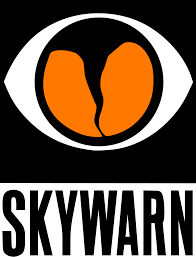One of the interesting things about Amateur Radio is the nearly universal use of PL-259 connectors for base and mobile radio gear, at least that at or below the UHF end of the frequency spectrum. We typically utilize 50ohm cable, even if there are variations of loss across the frequency spectrum, diameter, etc.
One area we see very little standardization, especially across brands, is power connections. Almost all mobile and base gear runs off 12 volts, yet there are a multitude of connectors, having little more than the red for hot and black for ground color coding.
In addition, we will connect that equipment to a variety of sources, some making it obvious which connector is hot and which connector is ground. Others, like car batteries, often require a close look. Also, in some instances the wires are always properly color coded.
Because of these variables we can almost be certain, that if we tinker, change, or rearrange our radio gear very much, we WILL accidentally hook the wires up wrong and let the smoke out of some valuable piece of radio gear.
There are a number of ways to minimize, even virtually eliminate, this hazard. First, ALWAYS using color coded wire is a big plus. Red for hot, Black for ground. Make sure any power sources are similarly color coded, even if that means painting some nail polish on or around a the post of a power supply or battery.
Standardizing on your connectors is another good way, particularly one that is keyed. All you need to do is wire the connector at the power end of you power cable correctly once. I highly recommend this and have done this as far back as I can remember working in electronics. In my younger days I'd usually get a painful reminder when I started to slack away from the practice.
Of course, there are a multitude of different connectors out there, and which is best could be a nearly endless debate. Despite that, I'm going to recommend a particular connector to you: the Anderson Powerpole.
One reason to use Anderson Powerpoles is that it has been adopted by ARES and other amateur radio emergency communications groups. Many power supplies have these connectors built into them. Power rails designed around these connectors are in wide distribution. The are color coded and they are keyed.
Imagine a stressful situation during an actual deployment, or rushing to setup for a special event, or even field day. Sometimes we get rushed and it would be a perfectly bad time to make a mistake, but a very likely time for a mistake to be made. But with Powerpoles, it's almost impossible to connect them wrong.
Additionally, the connectors are friction connector, providing added safety in the event someone trips over the cable or it should get snagged. Rather than pulling a bunch of radio gear off a table, it'll just disconnect.
You can easily connect to any power system that has a Powerpole connector. Powerpole connectors are becoming more standard on power supplies and power rails, making for easy connection to other power sources.
 Others can more easily connect to your equipment. Since the connector is being more commonly used, people may more easily to connect to your equipment.
Others can more easily connect to your equipment. Since the connector is being more commonly used, people may more easily to connect to your equipment.
Anderson Powerpoles come in a variety of sizes, but the 15/30/45 Amp units use the same housing, but different inserts for the different currents. As a result, they are interchangeable and can be connected together as long as the current limit of the smallest rated connector is not exceeded. However, beyond that, no two different classes of connector have the ability to interchange. So be sure to order one of the three amp ratings, using red and black housings. A search for "Anderson Powerpole 30A" will usually render what you want. 30A will handle more than enough for a typical 100W transmitter.
Learning to properly assemble is a bit of a trick. First, you must be sure to configure the connectors properly for Amateur Radio use (see photo). Then, you must learn how to insert the blades/inserts into the connector after you have crimped the wire - which is easy once you master it. The best thing to do is talk to someone who is already using them.
The biggest downside is cost, You'll spend 25-50 cents per connector + the cost of a Crimping Tool ($50-$60). You can make them with cheaper ones, either after-market for the task or even standard ones, but it's harder if the crimping tool isn't specifically made for the task.




